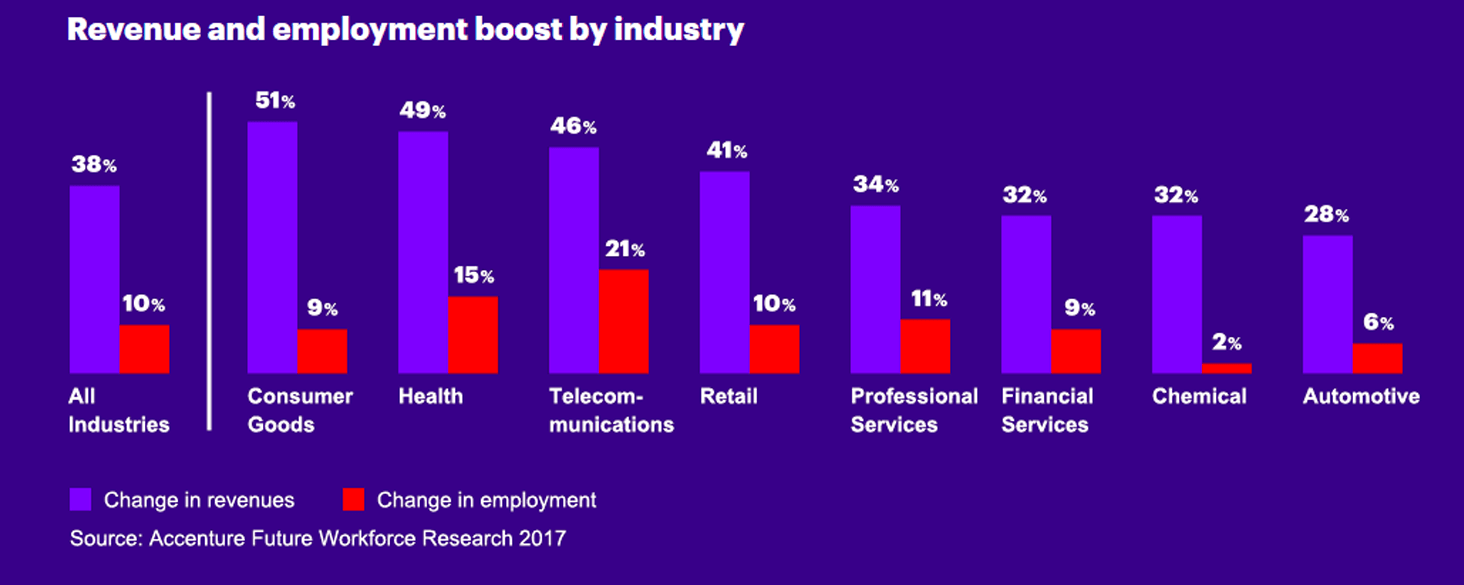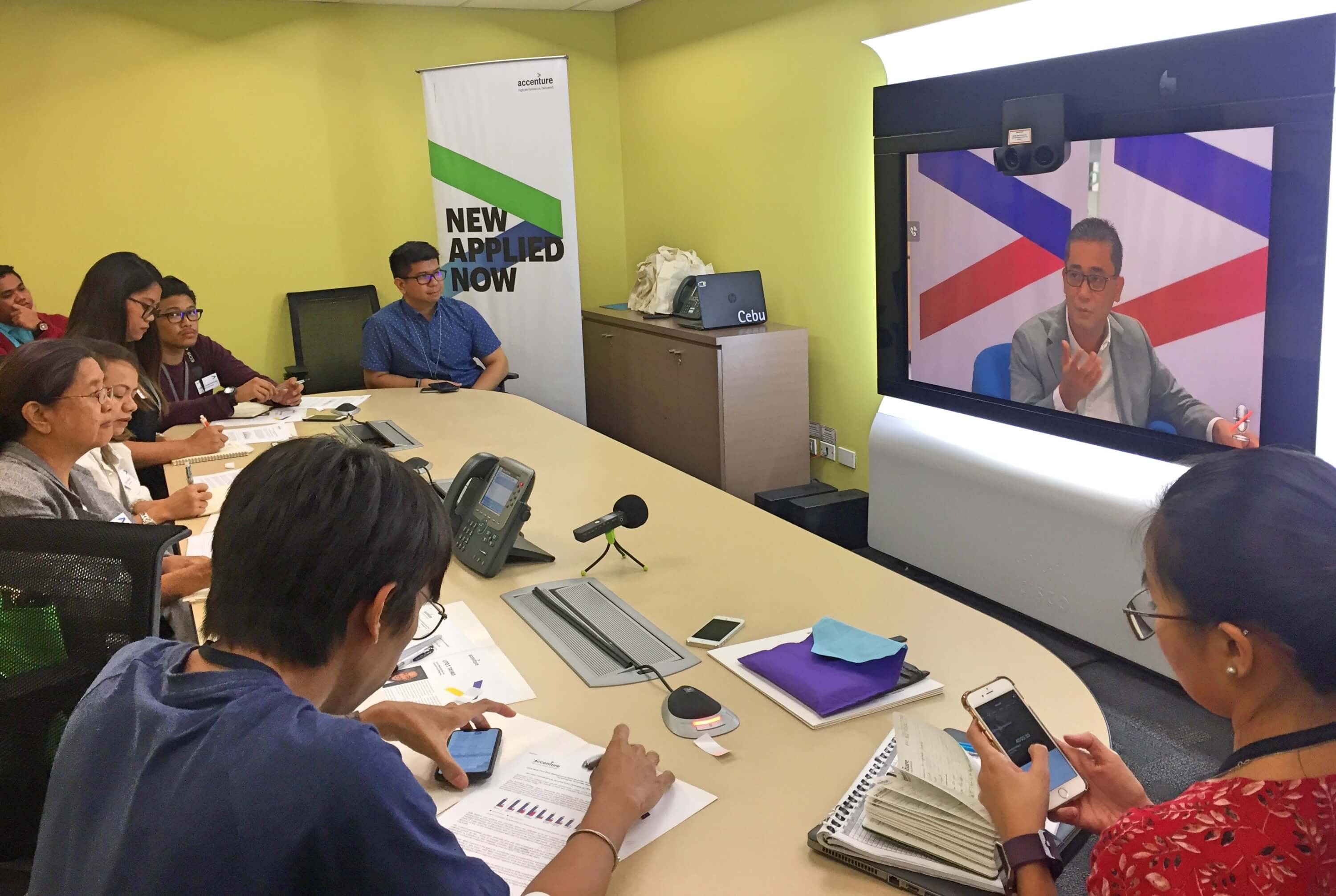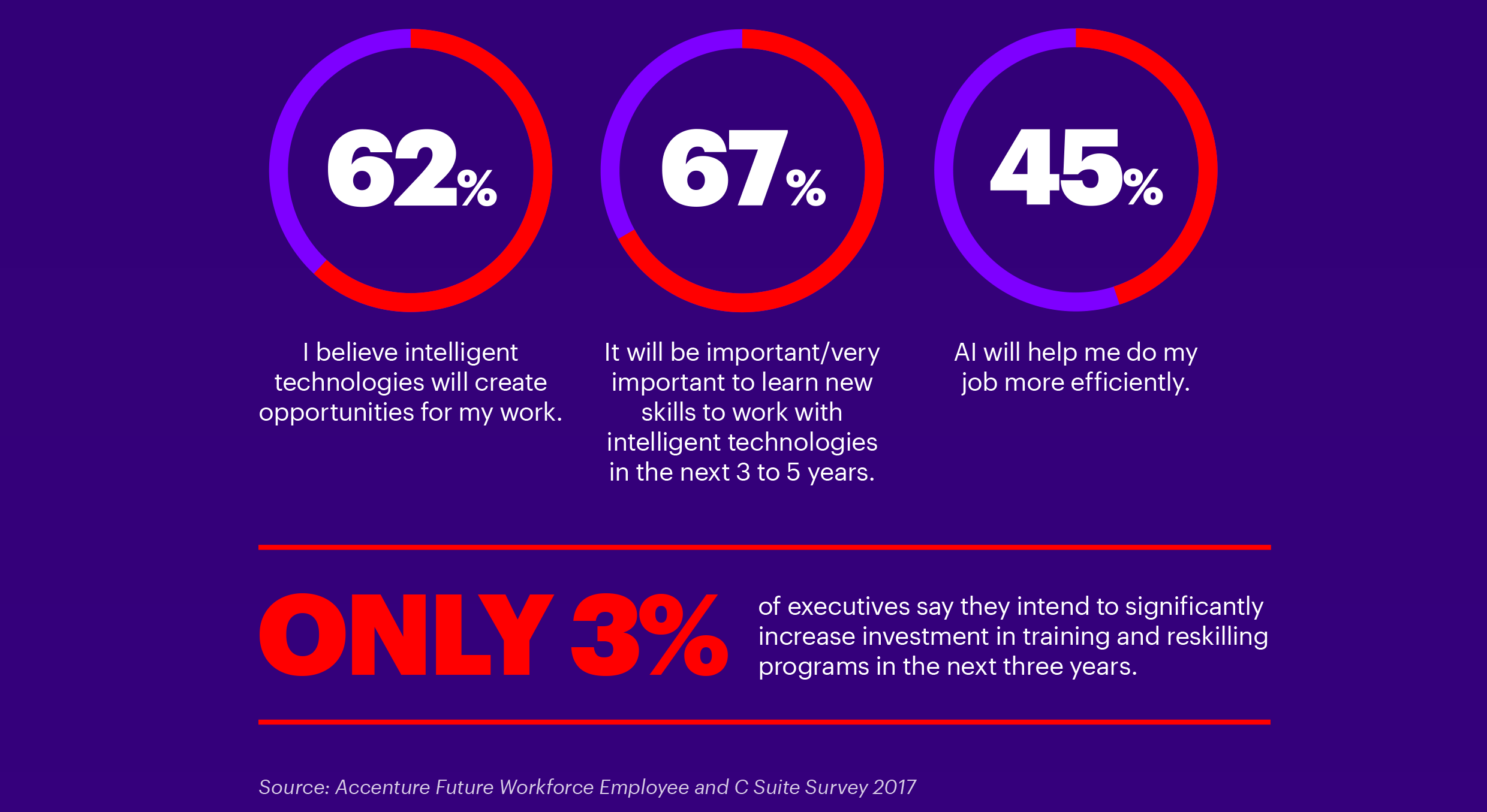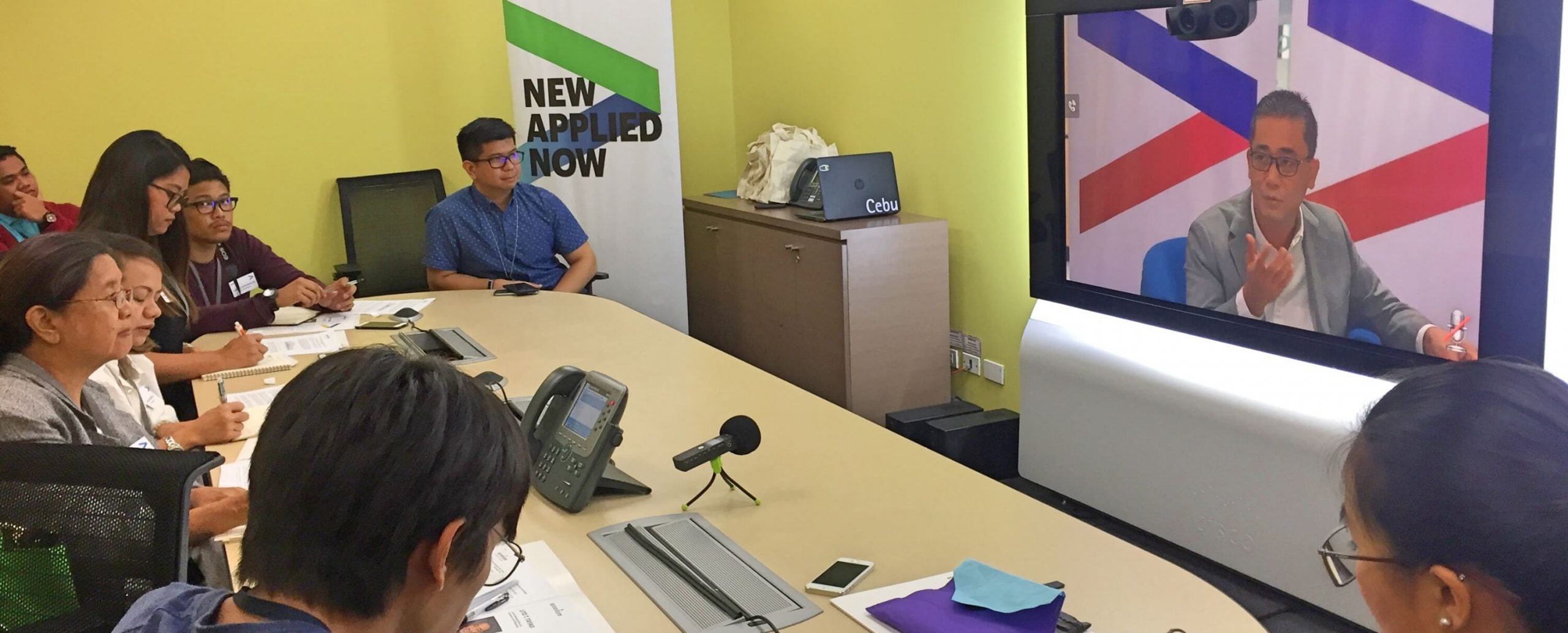Rather than displace human workers, artificial intelligence or AI will create more jobs and boost company revenues, according to a report by Accenture.
If businesses invest in AI and human-machine collaboration, they could increase revenues by 38% by 2020 and raise employment levels by 10%, the report said. Globally, that increase could amount to $4.8 trillion.
Investing on new technology like AI and the training of employees for the new IT is already “urgent,” said Lito Tayag, Country Managing Director of Accenture in the Philippines.

Augment workers
He said the survey, done on 14,078 workers and 1,201 business leaders across the world, showed that both business leaders and employees see the value of working with AI.
Tayag said in a tele-press conference with Manila and Cebu media yesterday that 74% of business leaders say they will “automate tasks and processes to a large/very large extent in the next 3 years.”
Of the number, 97% say “they will use it to augment worker capabilities,” the report pointed out.
“Often people only think of AI boosting growth by substituting humans. But actually, huge value is going to come from the new goods, services and innovations AI will enable,” the Accenture report quoted MIT Economics Professor David Autor as saying.

Urgency to invest in training, new IT
Tayag said the report found that workers “are impatient to work with AI,” with 67% saying it is important to develop skills to work with intelligent machines, 62% saying these technologies will have a positive impact on their work, and 45% believing AI will help them do their jobs more efficiently. He cited examples of how employees become more efficient by working with intelligent machines and AI. The openness to develop new skills to work with AI is supported not only by millennials, at 75%, but also baby boomers, at 56%, the report said.
When asked about the PwC Cebu 2017 CEO Survey that showed only 35 percent of Cebu business leaders look at how technology can help in the company’s overall strategic plan, Tayag said the gap “points more to the urgency.”
He said the CeO survey vis-a-vis the Accenture report “highlights the need to actually accelerate even just the basic acceptance of the reality” of what he described as the new IT like AI and machine learning.
“On one hand we are already looking at the implementation, in Cebu they are still looking at the acceptance that this is something important for them to do,” he said.
Tayag said AI and human-machine collaboration are business differentiators that can bolster companies in a disruptive business environment.
“Do you want to risk the disruption that will be brought about by others who are going to do this reworking of processes?” he said.

Key recommendations
Tayag said the study found business leaders “underinvesting in skills development” with only 3% of executives planning “to significantly increase investment in skills development in the next 3 years.” He said, however, this could also be the case of businesses already investing heavily in training and no longer planning to “significantly increase” efforts.
“To achieve higher rates of growth in the age of AI, companies need to invest more in equipping their people to work with machines in new ways,” said Mark Knickrehm, group chief executive, Accenture Strategy. “Increasingly, businesses will be judged on their commitment to what we call Applied Intelligence – the ability to rapidly implement intelligent technology and human ingenuity across all parts of their core business to secure this growth.”
Tayag said the report made 3 key recommendations on how leaders can “shape the future workforce in the age of AI.”
1. Reimagine Work by reconfiguring work from the bottom up. Assess tasks, not jobs; then allocate tasks to machines and people, balancing the need to automate work and to elevate people’s capabilities. Nearly half (46 percent) of business leaders agree that job descriptions are already obsolete; 29 percent say they have redesigned jobs extensively.
2. Pivot the Workforce to areas that unlock new forms of value. Go beyond process efficiencies and prepare the workforce to create new customer experiences. Fuel new growth models by reinvesting the savings derived from automation into the future workforce. Foster a new leadership DNA that underpins the mindset, acumen and agility required to seize longer-term, transformational opportunities.
3. Scale up “New Skilling.” Measure the workforce’s level of skills and willingness to learn to work with AI. Using digital platforms, target programs at these different segments of the workforce and personalize them to improve new skills adoption.

